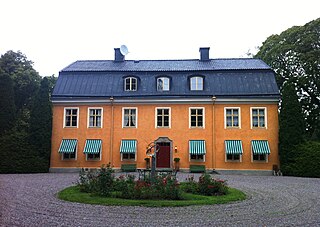Incumbents

- Monarchs – Eystein I Magnusson, Sigurd the Crusader, Olaf Magnusson (co-rulers)
| |||||
| Centuries: | |||||
|---|---|---|---|---|---|
| Decades: | |||||
| See also: | List of years in Norway | ||||
Events in the year 1115 in Norway.


Olaf III or Olaf Haraldsson, known as Olaf the Peaceful, was King of Norway from 1067 until his death in 1093.
Haakon Magnusson, byname Toresfostre, was king of Norway from 1093 to 1095. Haakon was only partially recognized within Norway and his reign was thus of limited significance. He has generally not been counted in the numbered series of Norwegian kings.

Haakon V Magnusson was king of Norway from 1299 until 1319.
Sigurd Magnusson, also known as Sigurd the Crusader, was King of Norway from 1103 to 1130. His rule, together with his half-brother Øystein, has been regarded by historians as a golden age for the medieval Kingdom of Norway. He is otherwise famous for leading the Norwegian Crusade (1107–1110), earning the eponym "the Crusader", and was the first European king to personally participate in a crusade.

Signhildsberg is a manor that formerly was a royal estate, located in the parish of Håtuna approximately 4 kilometres (2.5 mi) west of the modern town of Sigtuna, by Lake Mälaren in Sweden. Although the location is nearly forgotten, it has a central role in Norse mythology, according to which it was founded by the Norse god Odin.

Eystein Magnusson was King of Norway from 1103 to 1123 together with his brothers Sigurd the Crusader and Olaf Magnusson, although since Olaf died before adulthood, only Eystein and Sigurd were effective rulers of the country.

Haakon Ericsson was the last Earl of Lade and governor of Norway from 1012 to 1015 and again from 1028 to 1029 as a vassal under Danish King Knut the Great.

The Fairhair dynasty was a family of kings founded by Harald I of Norway which united and ruled Norway with few interruptions from the latter half of the 9th century. In the traditional view, this lasted until 1387, however, many modern scholars view this rule as lasting only three generations, ending with Harald Greycloak in the late 10th century. The moniker "Fairhair dynasty" is a retrospective construction: in their lifetime what little traces there are refer to them consistently as "Ynglings".
Thorstein the Red or Thorstein Olafsson was a viking chieftain who flourished in late ninth-century Scotland.

The Norway men's national handball team represents Norway at international handball competitions, and is governed by the Norges Håndballforbund (NHF). As of 2022, Norway has been in 2 finals.
Events in the year 1986 in Norway.
Events in the year 1862 in Norway.

Olaf the Peacock or Olaf Hoskuldsson was a merchant and chieftain of the early Icelandic Commonwealth, who was nicknamed "the Peacock" because of his proud bearing and magnificent wardrobe. He is a major character in the Laxdæla saga and is mentioned in a number of other Icelandic sources. The son of a slave woman, Olaf became one of the wealthiest landowners in Iceland and played a major role in its politics and society during the latter half of the tenth century. In addition to the Laxdæla Saga in which he takes a leading role, Olaf also is mentioned in Egils saga, Njáls saga, Gunnlaugs saga, Kormáks saga, Grettirs saga and the Landnámabók, among others.
Events in the year 1948 in Norway.
Events in the year 1908 in Norway.
The Hardrada dynasty was a powerful royal dynasty which ruled, at various times in history, the Kingdom of Norway, the Kingdom of Mann and the Isles, and the Earldom of Orkney.
Nyt Tidsskrift is a former Norwegian literary, cultural and political periodical issued from 1882 to 1887, and with a second series from 1892 to 1895. The periodical had contributions from several of the leading intellectuals of the time, including later Nobel Literature Prize laureate Bjørnstjerne Bjørnson, later Nobel Peace Prize laureate Fredrik Bajer, the writers Alexander L. Kielland, Jonas Lie, Arne Garborg and Hans Aanrud, proponents for women's rights Camilla Collett, Gina Krog and Hagbard Emanuel Berner, and painter Erik Werenskiold.

The House of Sverre was a royal house or dynasty which ruled, at various times in history, the Kingdom of Norway, hereunder the kingdom's realms, and the Kingdom of Scotland. The house was founded with King Sverre Sigurdsson. It provided the rulers of Norway from 1184 to 1319.
Events in the year 1380 in Norway.